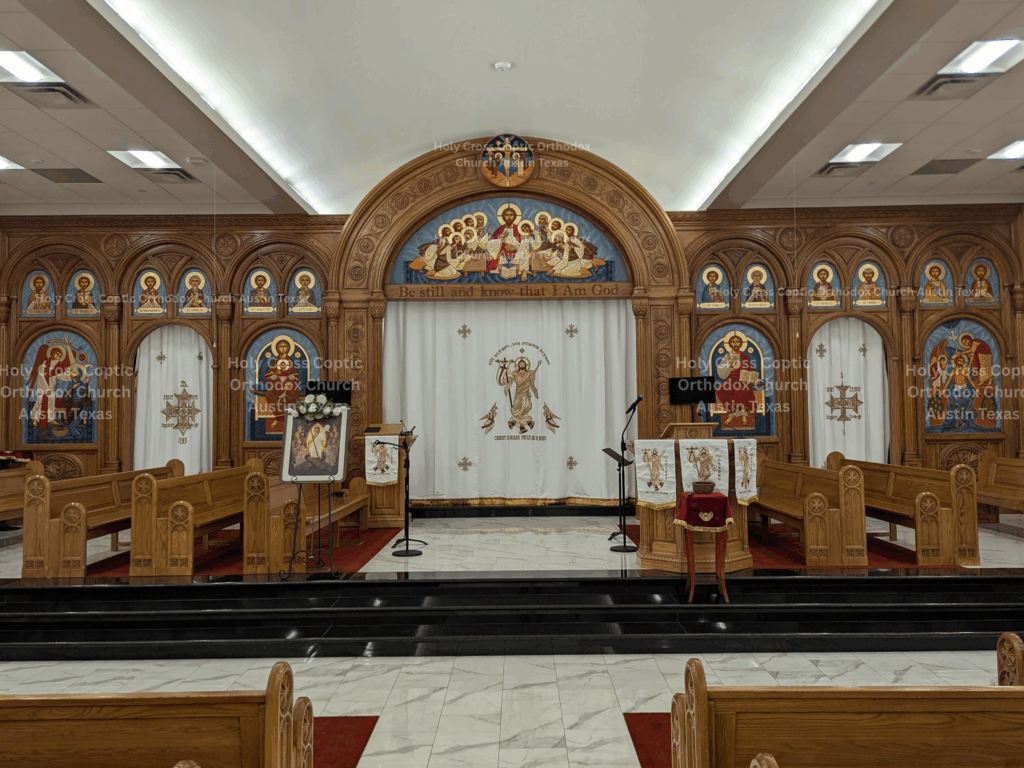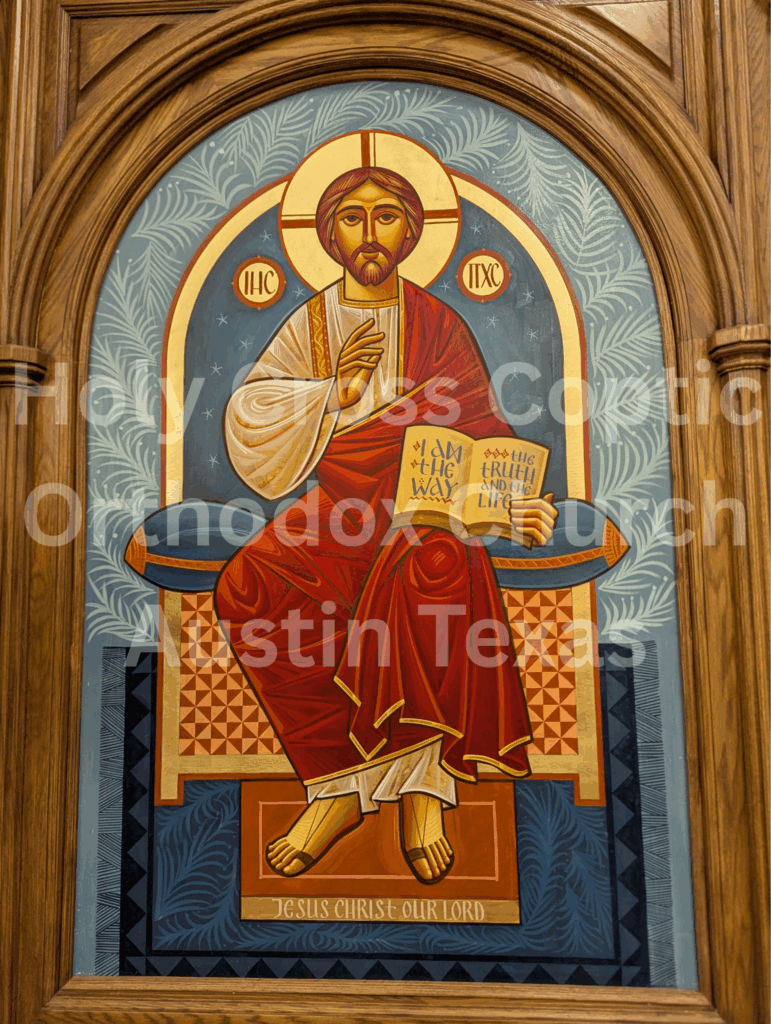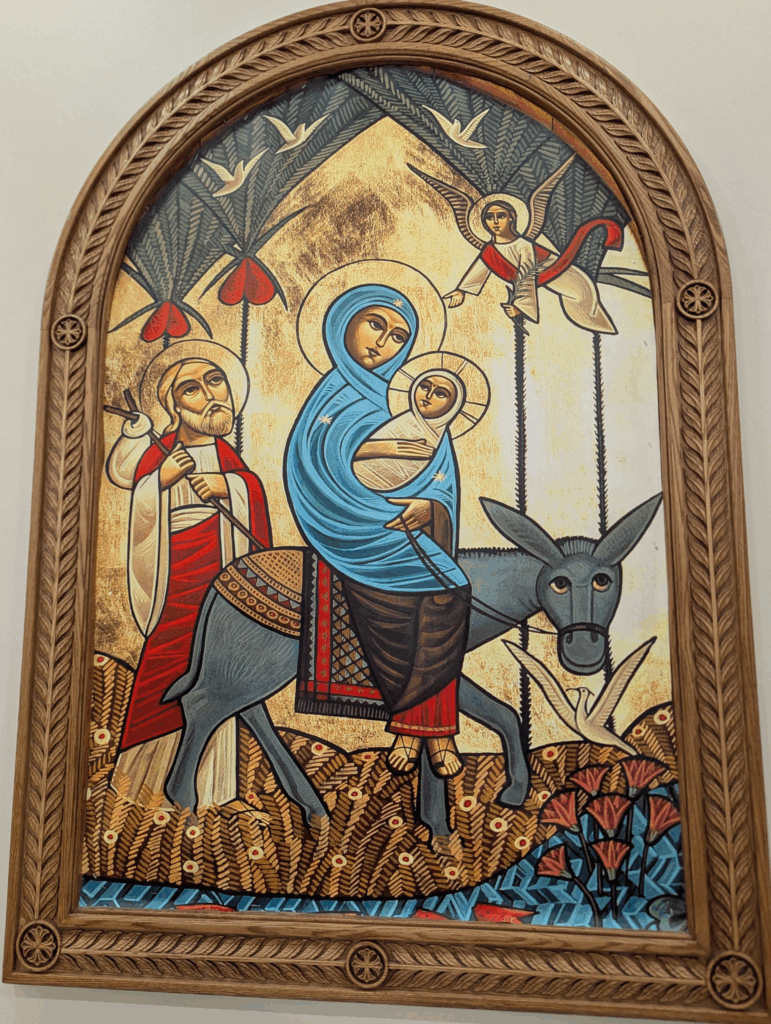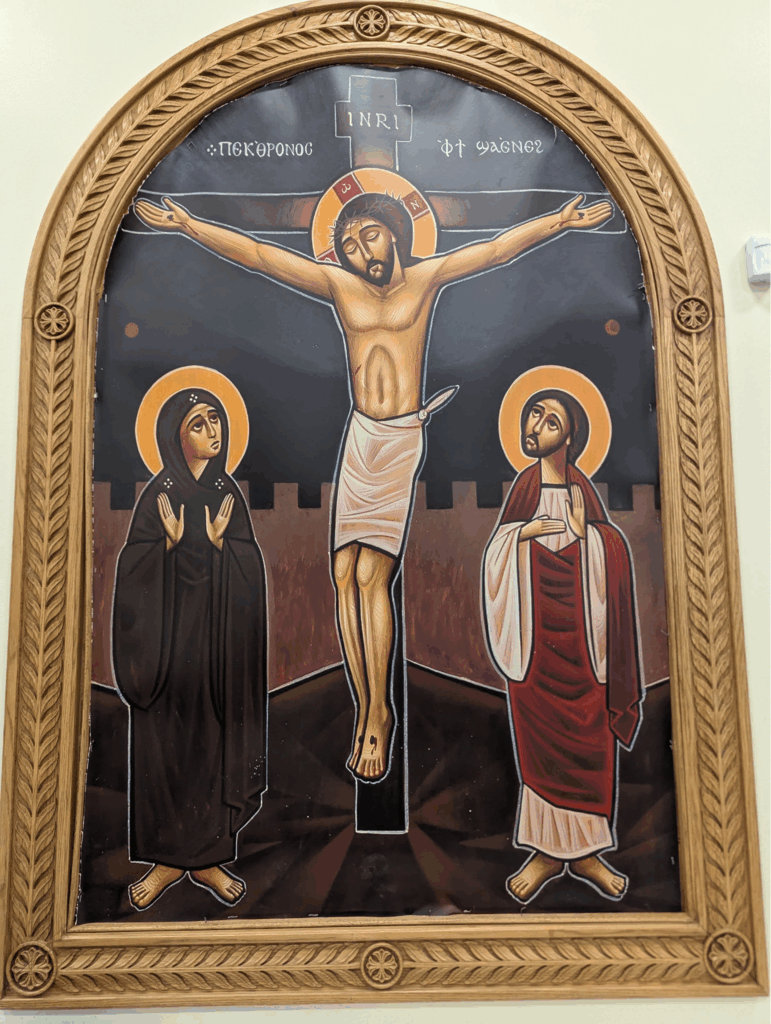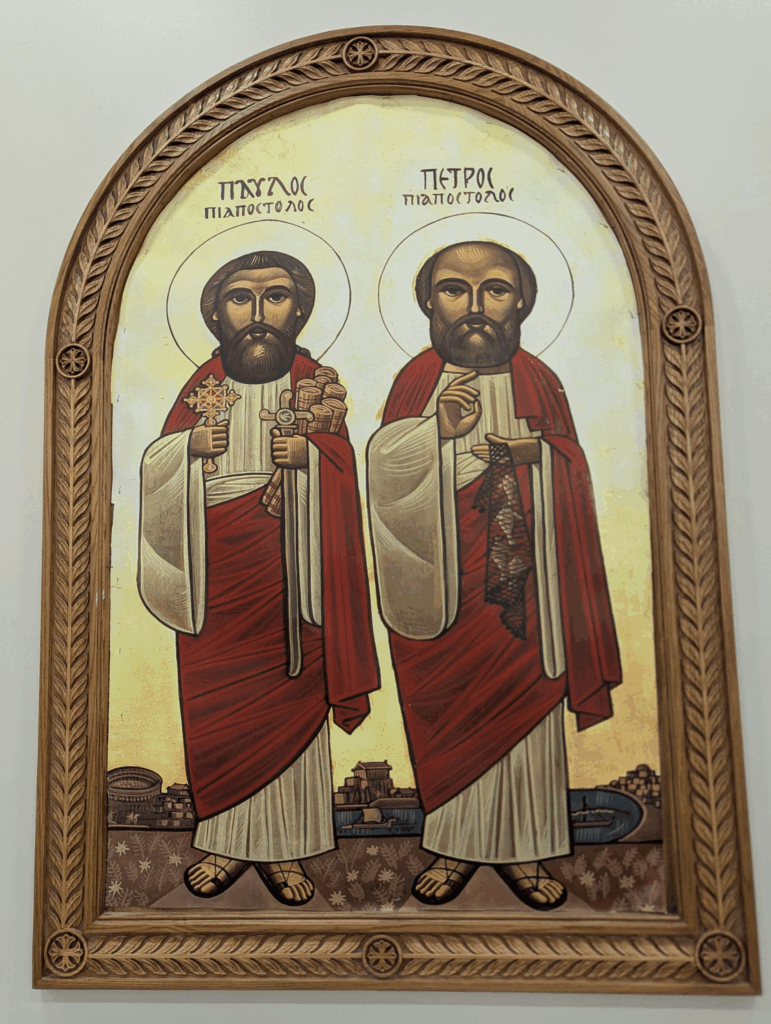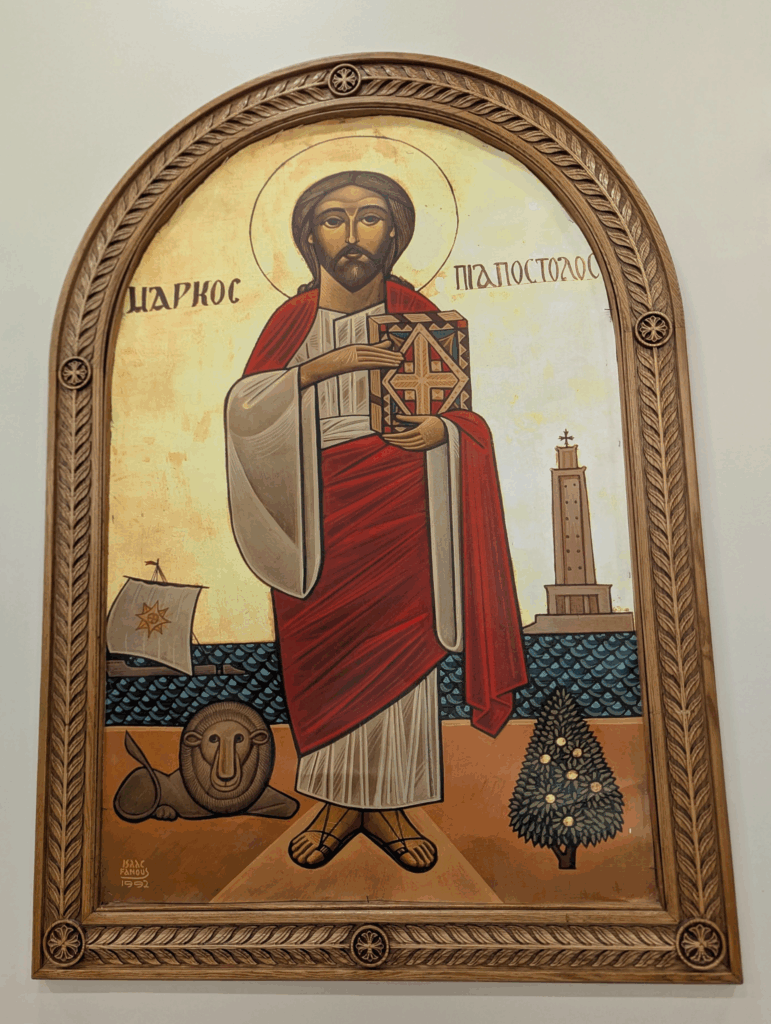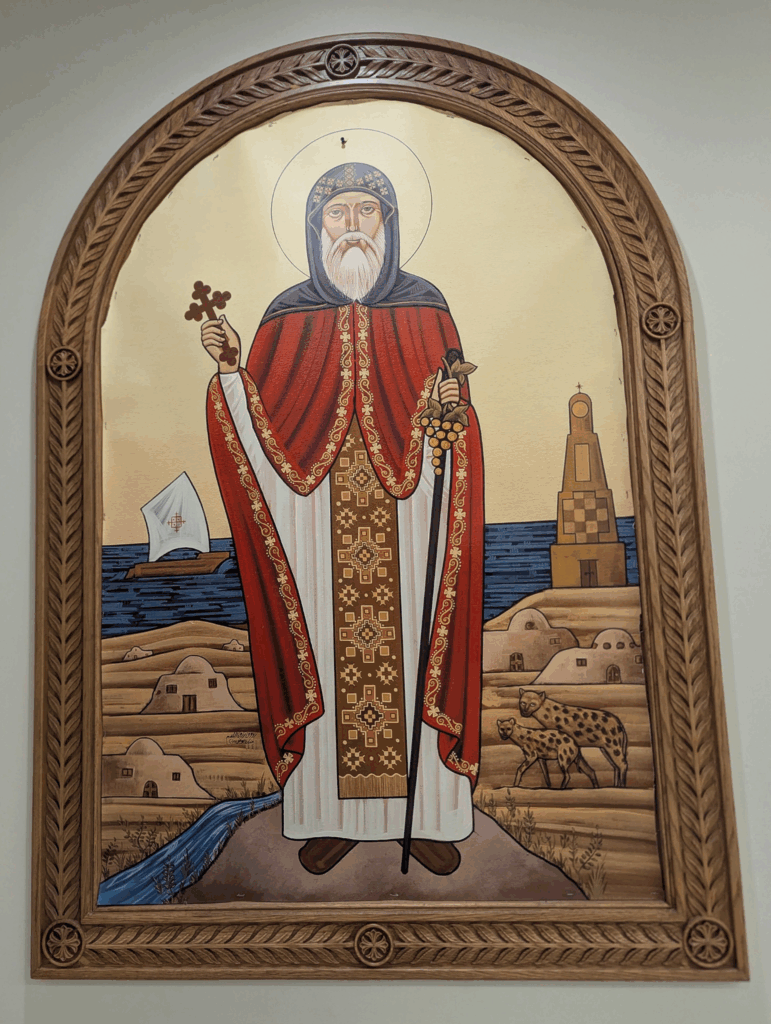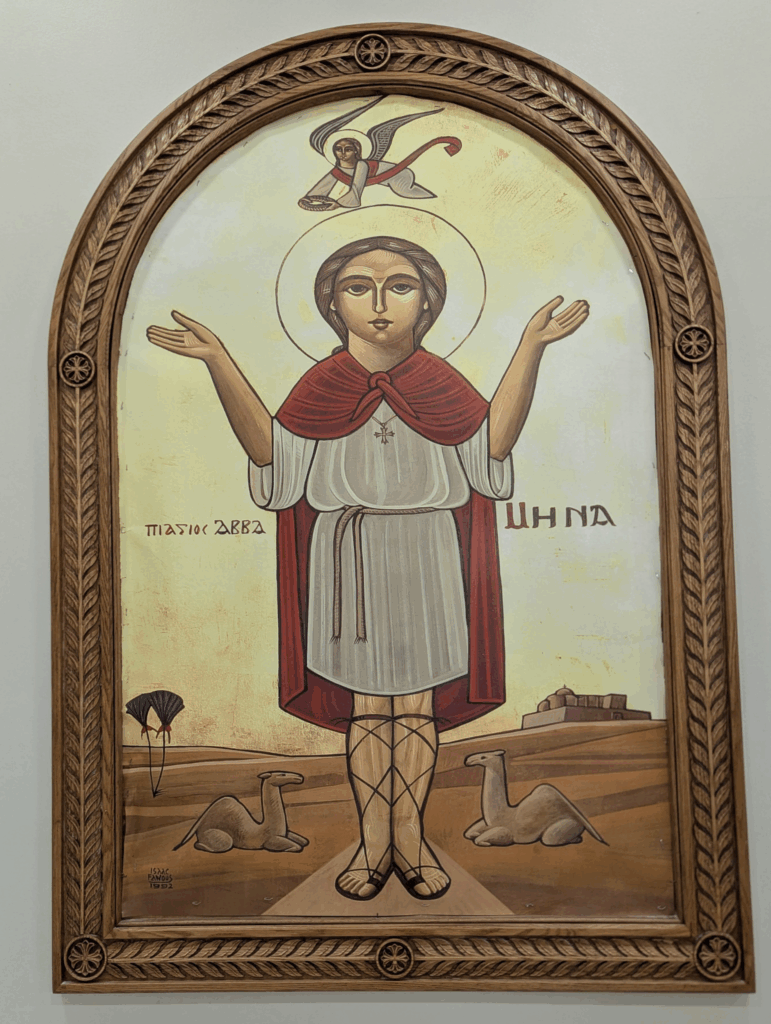What is an Icon?
Overview
In Christianity, icons are more than religious art—they are sacred images that invite believers into deeper reflection and communion with God. Rooted in the Greek word εἰκών (ikon), meaning “image,” icons depict saints, holy events, and especially Christ, serving as windows into the divine story.
Rather than capturing a single moment, icons often convey entire spiritual narratives. They are venerated—not worshiped—for the holy presence they represent, much like cherishing a loved one’s photo out of love for the person. In traditions like the Coptic Orthodox Church, icons are consecrated and treated as living witnesses, reminding the faithful of their place in the communion of saints and the presence of the living God.
Interesting Fact
One distinctive feature of Coptic icons, also found in ancient Egyptian art, is the use of size to signify importance: the central figure—often a saint—is depicted larger than the surrounding figures to immediately draw the viewer’s attention. Similarly, in ancient Egyptian paintings, the Pharaoh is typically shown as the largest figure to highlight his prominence.
Coptic icons also portray more than just a single moment in time. They are rich with meaning, often representing the past, present, and future simultaneously. Rather than capturing a specific event, the icons aim to express the full essence of what we admire and celebrate in a saint’s life.
Description
The word icon comes from the Greek εἰκών (ikon), meaning “image.” In the Christian tradition, however, an icon is far more than just an image or a piece of art—it is a sacred window into the divine story. Icons visually represent holy people, saints, and sacred events, serving as a constant reminder of God’s work throughout history. They draw us into contemplation, inviting us to reflect on the faith, suffering, and triumph of those who came before us, especially the life, death, and resurrection of our Lord Jesus Christ.
Through this reflection, icons help lift our hearts toward God. They are rich with spiritual symbolism, often weaving together multiple layers of meaning or stories within a single image. Rather than capturing just one moment, many icons encompass entire narratives, encouraging the viewer to enter into the mystery of salvation with deeper understanding and reverence. Ultimately, the purpose of icons is to bring the viewer into deeper communion with God.
It is important to note that Christians do not worship icons. Worship is due to God alone. Icons are venerated, respected, and honored, not for their material form, but for their sacred presence. Just as one might kiss a photograph of a loved one out of affection, not for the photo itself but for the person it recalls, so too do Christians venerate icons out of love and reverence for the holy figures they depict.
Through these sacred images, the faithful are reminded to lift their prayers to Christ and to seek the intercessions of the saints. As Scripture affirms, the saints are alive in God—“For He is not the God of the dead but of the living, for all live to Him” (Luke 20:38)—and they join us in worship and prayer. In fact, the book of Revelation (8:3–4) describes the saints and angels offering our prayers before the throne of God, uniting heaven and earth in a single act of devotion.
The theological foundation of icons is rooted in the very first chapter of the Bible, where we are told that God created man in His own image. In this way, humanity itself becomes the first icon—a reflection of the divine—and God, the first iconographer. This mystery deepens in the Incarnation, when God Himself took on flesh in the person of Jesus Christ. Through Him, the invisible became visible, and we are invited to behold His face and participate in the divine life.
From the earliest days of the Church, icons have served not only as visual theology but also as tools for teaching Scripture and shaping Christian worship. They continue to hold a central place in the liturgical and spiritual life of the Church. In the Coptic Orthodox tradition, icons are not merely displayed—they are consecrated with Myron (holy oil) by a bishop, and after he partakes of Holy Communion, he breathes upon them. This act symbolizes the Holy Spirit dwelling in the icons and affirms their role in the communion of saints. Icons, therefore, are not passive images—they are active witnesses, connecting us with the great cloud of witnesses, and drawing us ever closer to the presence of the living God.
Citations
Coptic Orthodox Answers. “What does the Church believe about icons and their use?” Copticorthodoxanswers.org, https://copticorthodoxanswers.org/faith-sacraments-theology/what-does-the-church-believe-about-icons-and-their-use/.
Holy Cross Coptic Orthodox Church. “Explaining the Iconostasis and Apse of Holy Cross w/ Fadi Mikhail of UK CopticIcons.” YouTube, 24 Nov. 2024, https://www.youtube.com/watch?v=XgWU5xrgmn0
Coptic Icon. “About Coptic Icons.” CopticIcon.net, https://www.copticicon.com/about.
The Iconostasis
Christ Enthroned
The Virgin Mary (Theotokos)
The Annunciation
Nativity
Flight to Egypt
Theophany
Crucifixion
Resurrection
Archangel Michael
Saint Peter and Saint Paul
Saint Mark
Saint Demiana
Saint Macarius of Alexandria
Saint Meena
Saint Bishoy
Saint Verena

